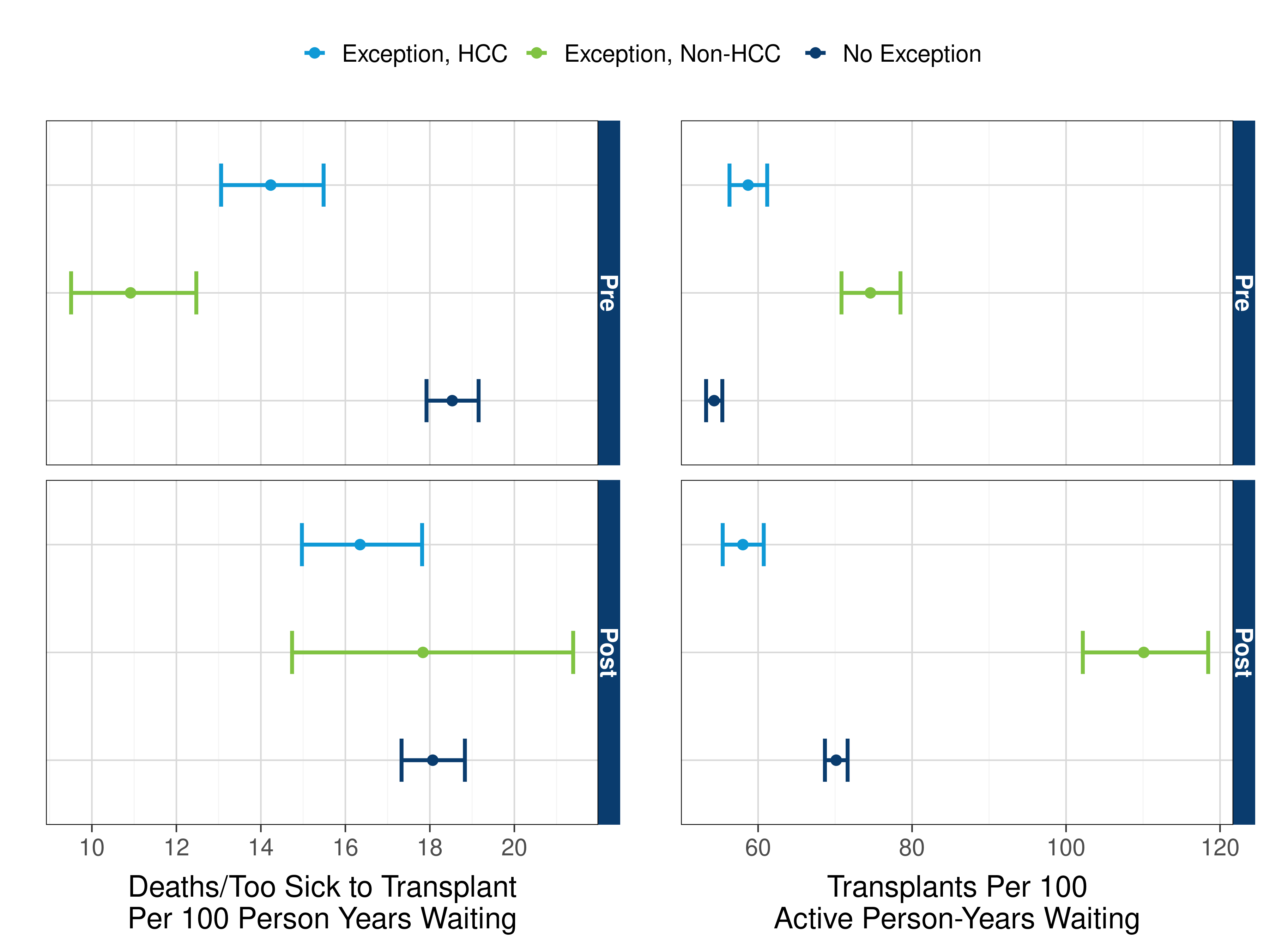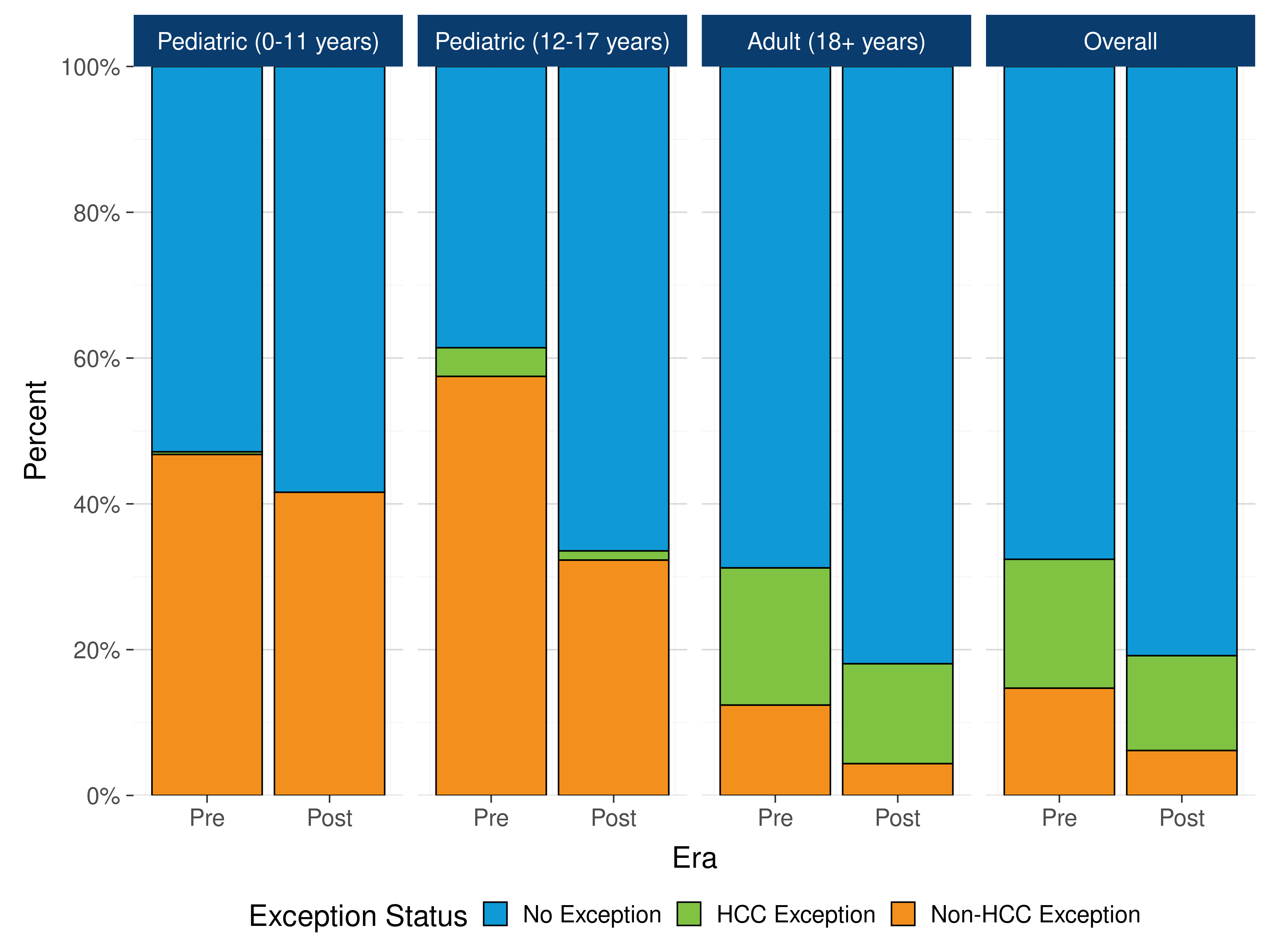18 Month Impact of the National Liver Review Board
1United Network for Organ Sharing, Richmond, VA, 2Research, United Network for Organ Sharing, Richmond, VA, 3University of Colorado, Aurora, CO, 4University of Washington, Seattle, WA, 5Baylor University Medical Center, Dallas, TX
Meeting: 2022 American Transplant Congress
Abstract number: 1108
Keywords: Liver, Liver transplantation, Waiting lists
Topic: Clinical Science » Liver » 60 - Liver: MELD Allocation*
Session Information
Session Time: 7:00pm-8:00pm
 Presentation Time: 7:00pm-8:00pm
Presentation Time: 7:00pm-8:00pm
Location: Hynes Halls C & D
Session Information
Session Time: 7:00pm-8:00pm
 Presentation Time: 7:00pm-8:00pm
Presentation Time: 7:00pm-8:00pm
Location: Hynes Hall C
*Purpose: The National Liver Review Board (NLRB) was implemented 5/14/2019, establishing a national structure for liver exceptions comprised of three specialty review boards and a scoring system based on the median score for the area of distribution. The area of distribution was revised with the implementation of Acuity Circles (AC) on 2/4/2020.
*Methods: OPTN exception requests, liver waitlist (WL) registrations, and deceased donor liver-alone transplant data was analyzed 18 months pre- (11/16/2017-5/13/2019) and post-policy (2/4/2020-7/31/2022). Time between NLRB and AC implementation (5/14/2019-2/3/2020) was excluded.
*Results: The proportion of auto-approvals significantly increased (51% post-policy vs. 23% pre-policy, p<0.001). Time for reviewers to resolve cases decreased (average 4.2 days post-policy vs. 3.8 days pre-policy, p<0.001). WL dropout rates increased for exception candidates, with similar rates for non-HCC exceptions and non-exceptions post-policy, and both non-exception and non-HCC exception transplant rates increased (Figure 1). There was a decrease in the proportion of transplants with an exception across adult and pediatric age groups (Figure 2).
*Conclusions: More exception forms were automatically approved, decreasing the burden on reviewers. Reviewers also resolved cases quicker. WL dropout rates were more similar between exception status groups post-policy and non-exception transplant rates increased, allowing non-exception candidates with higher medical urgency to receive transplants while driving down scores at which exception candidates access transplant.
To cite this abstract in AMA style:
Foutz J, Noreen S, Bradbrook K, Cafarella M, Pomposelli J, Biggins S, Trotter J. 18 Month Impact of the National Liver Review Board [abstract]. Am J Transplant. 2022; 22 (suppl 3). https://atcmeetingabstracts.com/abstract/18-month-impact-of-the-national-liver-review-board/. Accessed December 22, 2025.« Back to 2022 American Transplant Congress


